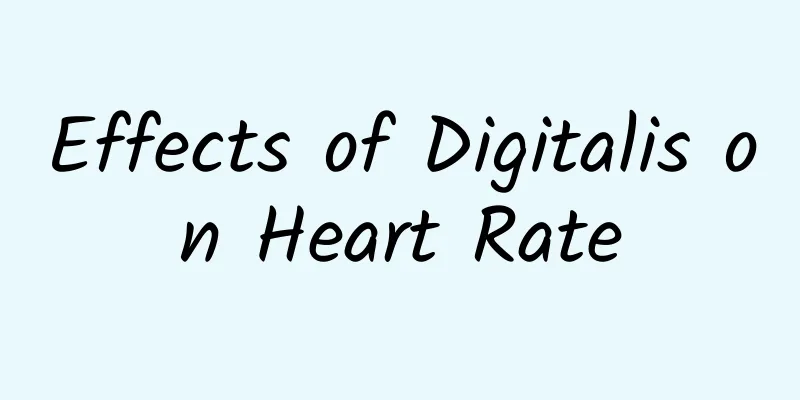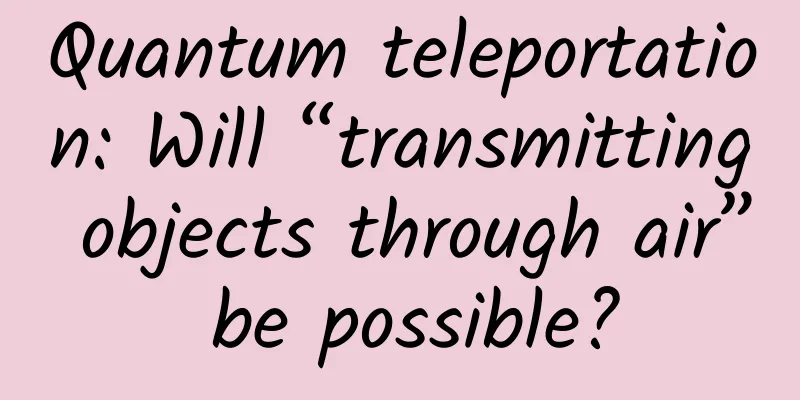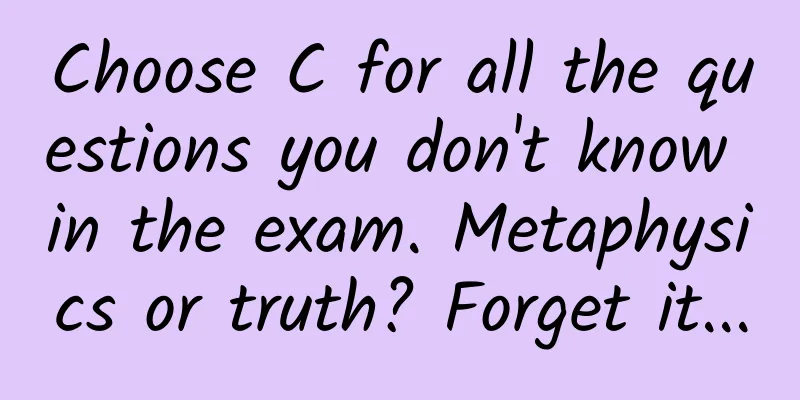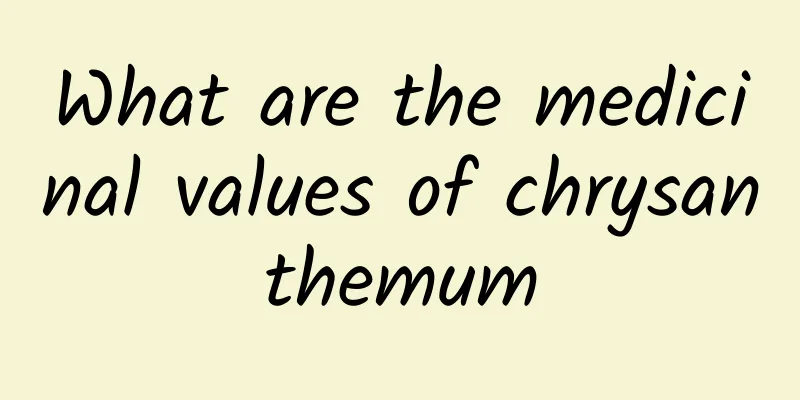Effects of Digitalis on Heart Rate

|
Many people are not familiar with digitalis poisoning and think that it is poisoning caused by digitalis. However, patients with heart failure, atrial fibrillation and other diseases are very familiar with it. Digitalis is also called poisonous herb. It is currently commonly used in clinical practice, but it also has many side effects. While treating the disease, it can also cause other conditions such as arrhythmia. This article introduces the characteristics of digitalis poisoning arrhythmia. Let’s learn about it together. Characteristics of arrhythmias in digitalis toxicity Generally speaking, digitalis poisoning can cause almost all types of arrhythmias. But on the other hand, arrhythmias that occur during digitalis treatment are not necessarily caused by digitalis poisoning, and some arrhythmias are not caused by digitalis poisoning at all, which are called "non-digitalis poisoning arrhythmias." Therefore, to diagnose digitalis poisoning, a comprehensive judgment must be made on the clinical data to determine whether the arrhythmia is caused by digitalis. Arrhythmias caused by digitalis poisoning can be continuous or intermittent; there can be a single arrhythmia, or two or more arrhythmias can appear alternately or exist at the same time; at the same time, most arrhythmias caused by digitalis poisoning are diverse and variable. Digitalis poisoning arrhythmias can be divided into two groups according to their nature: ectopic excitation and inhibition, but they often occur in combination. 1. Arrhythmias caused by the ectopic excitatory effects of digitalis 1. Ventricular premature beats: account for about 50%~60%. Premature ventricular contractions caused by digitalis often present as bigeminy, especially those occurring on the basis of atrial fibrillation, which is almost certainly digitalis poisoning; multifocal or polymorphic premature ventricular contractions are manifestations of severe digitalis poisoning. 2. Ventricular tachycardia: Digitalis-induced ventricular tachycardia is a manifestation of severe digitalis poisoning. The incidence of ventricular tachycardia accounts for about 10% of all arrhythmias in digitalis poisoning. Frequent ventricular premature beats, especially multi-source or bidirectional ventricular premature beats, can easily lead to ventricular tachycardia, bidirectional ventricular tachycardia, and even ventricular fibrillation. Premature ventricular contractions that occur on the basis of atrial fibrillation should be distinguished from intraventricular atrial conduction errors. The former is a manifestation of digitalis poisoning, while the latter often indicates insufficient digitalis dosage. 3. Bidirectional tachycardia: Bidirectional tachycardia is almost certain to be caused by digitalis poisoning and is often a manifestation of severe poisoning. Bidirectional ventricular tachycardia is common in severe heart disease and digitalis poisoning. It is more common in the setting of atrial flutter, atrial fibrillation or atrial tachycardia. 4. Double tachycardia. Double tachycardia occurring during digitalis treatment is almost certain to be digitalis poisoning. 5. Atrial tachycardia: The polarity of the P wave of atrial tachycardia caused by digitalis is often the same as that of the sinus P wave, but the amplitude is smaller. Sometimes it may be irregular and may take on various forms, namely multifocal atrial tachycardia or chaotic atrial tachycardia. Atrial tachycardia with second-degree atrioventricular block is almost certainly due to digitalis toxicity and suggests hypokalemia. 6. Non-paroxysmal junctional tachycardia: also known as accelerated junctional autonomous rhythm. Non-paroxysmal junctional tachycardia combined with atrial fibrillation, especially accompanied by Wenckebach-type outflow block, is one of the most common digitalis poisoning arrhythmias and has a strong specificity for the diagnosis of digitalis poisoning. 7. Atrial flutter and atrial fibrillation: Atrial flutter caused by digitalis poisoning is rare. Atrial fibrillation that is relieved by conversion of sinus rhythm to ventricular rhythm during digitalis treatment is a more reliable evidence of digitalis poisoning. After using digitalis, the ventricular rate of patients with atrial fibrillation becomes extremely slow, and the occurrence of third-degree atrioventricular block is a manifestation of digitalis poisoning. Most patients with atrial fibrillation whose ventricular rate increases faster after using digitalis are suffering from digitalis poisoning. 2. Arrhythmias caused by the inhibitory effect of digitalis 1. Sinus bradycardia: Digitalis has an inhibitory effect on the autonomy of the sinoatrial node and sinoatrial conduction. Mild digitalis poisoning may cause sinus bradycardia, which may lead to sinus arrest. Sinus block may be accompanied by or without Wenckebach phenomenon. In severe cases, Adams-Stokes syndrome may occur due to excessive ventricular cycle. 2. Atrioventricular block: The effect of digitalis on atrioventricular conduction acts on the atrioventricular node itself. Therefore, the atrioventricular block caused by digitalis poisoning is mostly I degree, II degree Wenckebach type or complete type. Blockage. First-degree atrioventricular block occurring during digitalization should certainly be considered a manifestation of digitalis toxicity. Second-degree Wenckebach atrioventricular block is the most common incomplete atrioventricular block in digitalis poisoning, which can be accompanied by atrial tachycardia and non-paroxysmal junctional tachycardia. 3. Arrhythmias caused by the combined excitatory and inhibitory effects of digitalis 1. Atrial tachycardia with atrioventricular block: This arrhythmia can cause a high mortality rate if digitalis is not discontinued immediately. 2. Atrial fibrillation with non-paroxysmal junctional tachycardia, often accompanied by Wenckebach-type exit block. 3. Sinus bradycardia with non-paroxysmal junctional tachycardia. 4. Regarding "non-digitalis toxic arrhythmias": Although some arrhythmias occur in patients with digitalization or digitalis poisoning, they are not caused by poisoning and have nothing to do with digitalis poisoning. They are called "non-digitalis toxic arrhythmias". They include: ① parallel rhythm; ② accelerated ventricular autonomous rhythm; ③ paroxysmal junctional tachycardia; ④ second-degree Mobitz atrioventricular block; ⑤ various intraventricular blocks, including bundle branch block and fascicular block; ⑥ Complete subnodal atrioventricular block. Premature ventricular contractions and ventricular tachycardia are often manifestations of digitalis poisoning, while ventricular parallel rhythm or parallel rhythm ventricular tachycardia are generally considered to be non-digitalis poisoning arrhythmias. In contrast to nonparoxysmal junctional tachycardia, paroxysmal junctional tachycardia is rarely seen in digitalis poisoning. Second degree Wenckebach atrioventricular block is a very common manifestation of digitalis poisoning, while second degree Mobitz atrioventricular block is considered to be unrelated to digitalis poisoning. |
>>: Cactus for swollen tonsils
Recommend
The effect of drinking water with Ophiopogon japonicus and licorice
In autumn, the weather starts to become very dry,...
Zhang Wenhong leads the way! The first domestic oral COVID-19 drug report is released
On May 18, the first "treatment report"...
The efficacy and function of Sagittaria
As a very common Chinese medicinal material in da...
Effects and functions of hibiscus root
Many people are not very clear about hibiscus roo...
What are the effects of sea buckthorn paste
Sea buckthorn is a shrub that can grow in very ha...
The efficacy and function of wall grass
In daily life, people are not only very familiar ...
What are the effects of Xigan Mingmu San?
With the development of society, people's qua...
The efficacy and function of Toona white bark
The essence of traditional Chinese medicine is to...
Why are cases still high as the weather gets warmer? Does temperature affect the activity of the virus?
It is the season of spring again, when flowers bl...
The more I apply a mask, the drier my skin becomes? What’s the problem?
Peeling, flaking, and enlarged pores? If your ski...
The efficacy and function of Emei Ampelopsis
Traditional Chinese medicine is very effective in...
Can sheep eat meat? Check out the weird behaviors of "eating a sheep"!
Copy review: Ran Hao, a well-known popular scienc...
#千万IP创科普# AI face-changing: I decide how he looks
Sichuan opera is a treasure of traditional Chines...
You will be sentenced! Don’t take this kind of photo casually!
Fujian Ship as the Navy's Star Equipment Attr...
They are the ones who understand God the most.
Everyone is the protagonist of life and the prota...









